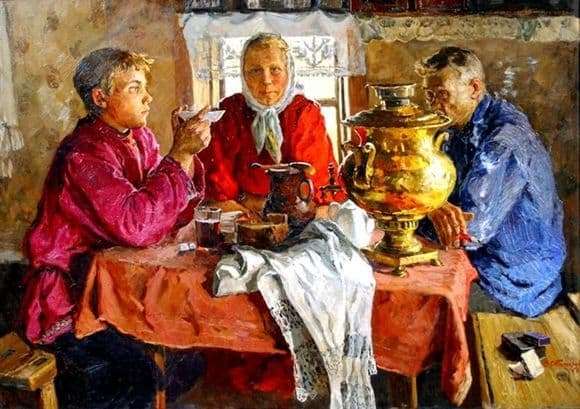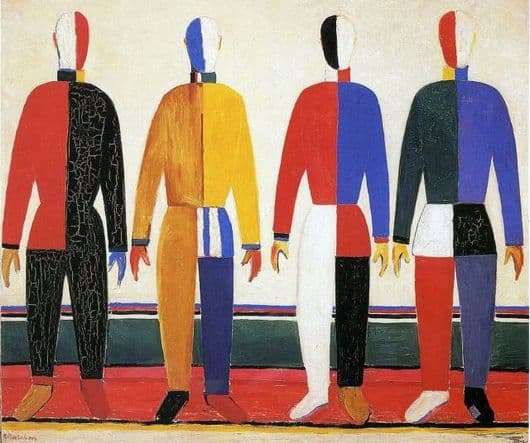
Abram Arkhipov was born in the village of the Ryazan Territory and therefore the theme of the village can be traced in many of his works. “Arkhipovsky” style is so unique that it is difficult to confuse it with any other. This is reflected in the grotesque sweep of the movement of the brush, the brightness of the color, the saturation of the life of each of his paintings.
An example of this style of creativity Arkhipova is his work “Away”. Each of the heroines of the artist is a beautiful Ryazan woman. Presented exactly Russian village beauty, rich in national color.
All women are strong, ruddy, funny. Their majesty can be seen even through voluminous folk dresses. Arkhipov applies the principle of the ringed overall composition. Four figures gathered in a circle. Their bright clothes are complemented by sunshine.
After writing the picture “Away”, the artist was so much in his success that he decided to put it on the opening day, but being quite superstitious, he categorically refused to show it to anyone before the exhibition.
“Away” was a logical continuation and completion of the previous painting “On the Spring Festival”. Arkhipov was looking for ways, colors, faces, and finally reached the apogee of creativity, reducing the interior area and at the same time increasing the number of figures involved in the composition.
The picture really was a success and became the best in the works of Arkhipov of this period. The pupils, of whom there were many, sincerely praised the work of the artist.
Arkhipov was interested in artists and art historians of that time. KF Yuon gave a short but succinct description of his work. He personified him as a lover, a national poet, fed by Ryazan songs, village girls, who can “vividly write” and give his whole soul to the art of painting.
Description of the painting by Abram Arkhipov “Away”







